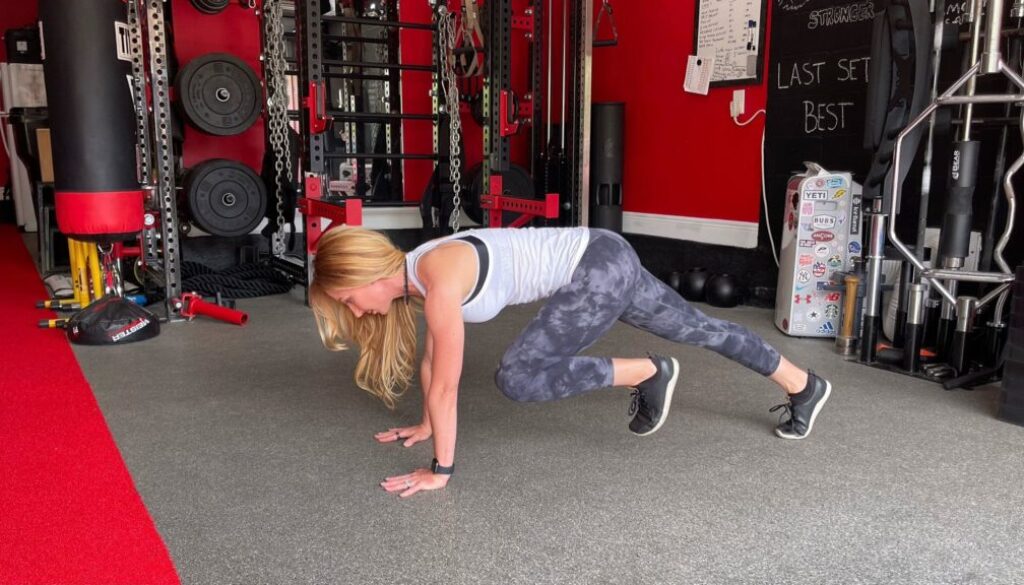Tabata Training: Quick and Effective Workouts for Busy Lives
Tabata training is a popular form of high-intensity interval training (HIIT) that offers quick and effective workouts for busy individuals looking to maximize their time in the gym. With its origins in Japan and a reputation for delivering results in a short amount of time, Tabata training has become a go-to option for those seeking to improve their fitness levels and overall health.
Tabata training involves short, intense bursts of exercise followed by brief periods of rest. This structure allows individuals to push themselves to their limits, resulting in increased cardiovascular fitness, muscle endurance, and calorie burn. In just four minutes, a Tabata workout can provide the same benefits as a longer, traditional workout, making it a convenient option for those with busy schedules.
What is Tabata Training?
Tabata training was developed by Dr. Izumi Tabata in the 1990s, based on his research into the effects of high-intensity interval training on athletic performance. The traditional Tabata protocol consists of 20 seconds of intense exercise followed by 10 seconds of rest, repeated for a total of eight rounds. This format allows for maximum effort during each interval, leading to significant improvements in both aerobic and anaerobic fitness.
History of Tabata Training
The name “Tabata” comes from its creator, Dr. Izumi Tabata, a Japanese researcher and former speed-skating coach. His groundbreaking study, published in 1996, compared the effects of moderate-intensity endurance training with high-intensity interval training on aerobic and anaerobic capacity. The results showed that the Tabata protocol produced greater improvements in both fitness parameters, leading to widespread adoption of this training method in various sports and fitness programs.
Benefits of Tabata Training
Tabata training offers a multitude of benefits for individuals looking to improve their fitness levels and overall health. Some of the key benefits include increased calorie burn, improved cardiovascular fitness, enhanced muscle endurance, and efficient use of time. Additionally, Tabata workouts can be adapted to suit different fitness levels and goals, making them a versatile option for beginners and advanced exercisers alike.
How to Start Tabata Training
To start Tabata training, it’s important to choose exercises that target different muscle groups and can be performed with maximum intensity. Some popular exercises for Tabata workouts include burpees, squats, push-ups, and sprints. Begin with a brief warm-up to prepare your body for the intense workout ahead, then perform each exercise at maximum effort for 20 seconds, followed by 10 seconds of rest. Repeat this cycle for a total of four minutes, aiming to push yourself to your limits during each interval.

Tabata Training Workouts for Beginners
For beginners looking to try Tabata training, it’s important to start slow and gradually increase intensity as fitness levels improve. Begin with simple bodyweight exercises such as jumping jacks, mountain climbers, and lunges, focusing on proper form and technique. As you build strength and endurance, you can incorporate more challenging exercises and increase the intensity of your workouts. Remember to listen to your body and rest as needed to prevent injury and ensure long-term progress.
Advanced Tabata Training Workouts
Once you’ve mastered the basics of Tabata training, you can take your workouts to the next level by incorporating more advanced exercises and increasing the intensity of each interval. Consider adding weights or resistance bands to your workouts to challenge your muscles and improve strength. You can also vary the duration of each interval or create Tabata circuits with multiple exercises to keep your workouts engaging and effective.
Tabata Training Equipment
One of the great things about Tabata training is that it requires minimal equipment, making it accessible to almost anyone. While you can perform Tabata workouts using just your body weight, some equipment options can add variety and challenge to your workouts. Common equipment used in Tabata training includes dumbbells, kettlebells, resistance bands, and jump ropes. These tools can help you target different muscle groups and increase the intensity of your workouts for greater results.
Common Mistakes to Avoid in Tabata Training
When starting Tabata training, it’s important to be mindful of common mistakes that can hinder your progress and increase your risk of injury. Some common mistakes to avoid include:
- Pushing yourself too hard and sacrificing form for speed
- Not warming up properly before starting your workout
- Neglecting proper rest and recovery between intervals
- Focusing on quantity over quality in your workouts
By being aware of these mistakes and taking steps to address them, you can ensure a safe and effective Tabata training experience that delivers results.
Tips for Success in Tabata Training
To maximize the benefits of Tabata training and achieve your fitness goals, consider the following tips for success:
- Stay consistent with your workouts and maintain a regular training schedule
- Listen to your body and adjust the intensity of your workouts as needed
- Focus on proper form and technique to prevent injury and ensure effective workouts
- Incorporate a mix of exercises to target different muscle groups and avoid plateaus
- Stay hydrated and fuel your body with nutritious foods to support your workouts and recovery
By following these tips and staying committed to your Tabata training routine, you can see significant improvements in your fitness levels and overall health.
Incorporating Tabata Training into Your Routine
Whether you’re a beginner or a seasoned fitness enthusiast, incorporating Tabata training into your routine can offer a quick and effective way to enhance your workouts and achieve your fitness goals. Start by adding one or two Tabata sessions per week, gradually increasing frequency and intensity as your fitness improves. You can also combine Tabata workouts with other forms of exercise, such as strength training or cardio, to create a well-rounded fitness program that keeps you motivated and engaged.

Nutrition and Recovery for Tabata Training
Proper nutrition and recovery are essential components of a successful Tabata training program. Make sure to fuel your body with a balanced diet rich in lean proteins, complex carbohydrates, and healthy fats to support your workouts and promote muscle recovery. Hydration is also key to maintaining optimal performance during Tabata workouts, so drink plenty of water throughout the day. Additionally, prioritize rest and recovery between workouts to allow your muscles time to repair and grow stronger, preventing burnout and overtraining.
Tabata Training for Weight Loss
Tabata training is a highly effective tool for weight loss due to its ability to torch calories and boost metabolism in a short amount of time. By incorporating Tabata workouts into your routine, you can create a calorie deficit, which is essential for weight loss. Additionally, the intensity of Tabata training can increase your post-exercise oxygen consumption (EPOC), leading to continued calorie burn even after your workout is complete. Combined with a healthy diet and lifestyle, Tabata training can help you achieve your weight loss goals efficiently and sustainably.
Monitoring Progress in Tabata Training
Tracking your progress is an important aspect of any fitness program, including Tabata training. Keep a workout journal or use a fitness app to record your workouts, including exercises, reps, and intensity levels. This can help you track improvements in strength, endurance, and overall fitness over time. Additionally, consider incorporating periodic fitness assessments, such as body measurements, body fat percentage, and performance tests, to gauge your progress and set new goals. Celebrate your achievements along the way and stay motivated to continue pushing yourself in your Tabata training journey.
Conclusion
In conclusion, Tabata training offers a quick and effective way to improve your fitness levels, burn calories, and achieve your health goals in a short amount of time. With its high-intensity intervals and minimal rest periods, Tabata workouts can challenge your body and push you to your limits, leading to significant improvements in cardiovascular fitness, muscle endurance, and overall health. By incorporating Tabata training into your routine and following proper guidelines for success, you can experience the benefits of this popular training method and see real results in your fitness journey.
Also Read:



